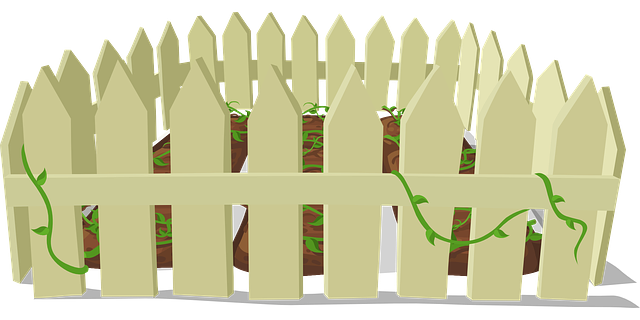Large properties present unique fencing challenges, demanding durable, aesthetically pleasing solutions that balance functionality with affordability. This article explores cost-effective fencing alternatives for expansive lands, delving into tailored needs assessment, innovative materials, installation options, longevity, and design considerations. From traditional to eco-friendly options, we guide property owners through the process of selecting optimal fences that enhance security, privacy, and landscape aesthetics without breaking the bank.
- Understanding Fencing Needs for Large Properties
- Traditional Fencing vs Cost-Effective Solutions
- Natural and Eco-Friendly Materials Options
- DIY vs Professional Installation: Pros and Cons
- Longevity and Maintenance Considerations
- Choosing the Right Fence for Your Budget and Landscaped Design
Understanding Fencing Needs for Large Properties
Fencing large properties presents unique challenges compared to smaller plots. The primary consideration is durability; fences must withstand harsh weather conditions and extensive use, especially if they’re designed to keep out livestock or intruders. Security is another key aspect, with robust designs necessary to prevent unauthorized access.
Additionally, functionality should be assessed—fences may need to serve multiple purposes, like providing privacy, defining property boundaries, or enabling easy access for maintenance. The scale of these properties often means that fencing solutions must be economical without compromising quality and longevity.
Traditional Fencing vs Cost-Effective Solutions
Traditional fencing methods can be both aesthetically pleasing and functional, but they often come with a hefty price tag, especially for large properties. The cost can quickly escalate due to the extensive materials and labor required. This is where cost-effective fencing solutions step in as a practical alternative. These modern options prioritize affordability without sacrificing quality or durability, making them an attractive choice for property owners on a budget.
By opting for innovative designs and materials, such as vinyl, wood composites, or chain link fences, homeowners can achieve the desired security and privacy at a fraction of the cost. These fencing solutions are not only more affordable but also require less maintenance over time, offering long-term savings. Additionally, many modern fence types are customizable, allowing property owners to create unique designs that complement their large-scale properties while remaining within their financial constraints.
Natural and Eco-Friendly Materials Options
When it comes to fencing large properties, opting for natural and eco-friendly materials can be an excellent choice for environmentally conscious homeowners. These options not only contribute to a greener planet but also offer aesthetically pleasing and durable solutions. Materials like wood, bamboo, and plant-based composites are sustainable alternatives to traditional synthetic fencing. For instance, wooden fences, when sourced from responsibly managed forests, can provide long-lasting protection while enhancing the natural beauty of your land.
Bamboo, known for its rapid growth, is another renewable resource that makes for an attractive and robust fence. Plant-based composites, often made from recycled materials, offer a unique blend of strength and eco-friendliness, ensuring your property is secure without leaving a significant carbon footprint. These natural options provide a serene and harmonious look, blending seamlessly with the surrounding environment, and can be an ideal choice for large properties seeking both functionality and environmental sustainability.
DIY vs Professional Installation: Pros and Cons
DIY fencing installation can be an attractive option for property owners on a budget, offering cost savings compared to professional services. The process typically involves purchasing pre-built or custom-cut fence panels and posts, along with tools and materials for assembly and digging. Many find it rewarding to create their own outdoor space, enjoying the sense of accomplishment and control over design choices. However, DIY installation has its challenges. It requires physical labor, including heavy lifting and digging deep holes, which can be strenuous and time-consuming. Additionally, ensuring proper measurement, alignment, and structural integrity demands precision and skill, potentially leading to mistakes or an uneven finish.
On the other hand, hiring professional fence installers provides a range of benefits. Experts offer specialized knowledge and experience, guaranteeing a precise and level installation that meets local regulations. They handle all aspects, from site preparation to final touches, saving homeowners time and effort. However, professional services come at a cost, which might be higher than DIY options. Homeowners should weigh the pros and cons, considering factors like skill level, available time, budget constraints, and desired fence longevity before deciding between DIY or professional installation.
Longevity and Maintenance Considerations
When considering cost-effective fencing solutions for large properties, it’s crucial to balance initial investment with long-term durability and maintenance requirements. Opting for high-quality materials can significantly enhance the longevity of your fence, reducing replacement needs over time. For instance, treated wood or durable vinyl options are known for their resistance to rot, decay, and pest damage. Regular cleaning and minimal upkeep are often all that’s needed to keep these fences in excellent condition.
Compared to traditional fencing materials, modern alternatives like metal or composite fencing offer superior strength and low maintenance benefits. These materials require little to no painting or staining, and they’re highly resistant to rust and warping. While initial installation costs might be higher, their durability and reduced maintenance needs make them a cost-effective choice in the long run.
Choosing the Right Fence for Your Budget and Landscaped Design
When considering fencing solutions for a large property, aligning your choice with both budget and landscaped design is paramount. Different types of fences cater to diverse aesthetics and price points; wooden options like cedar or treated pine offer natural beauty at varying cost levels, while vinyl and iron fences provide more affordable alternatives with less maintenance but might lack the visual appeal of their organic counterparts.
Prioritise your priorities—if preserving your property’s scenic charm is paramount, opt for materials that blend seamlessly with your surroundings. Conversely, if budget is tight, consider cost-efficient materials that can be easily maintained. Ultimately, a thoughtful combination of functionality, affordability, and visual harmony will ensure the chosen fence enhances your landscape without straining your finances.
